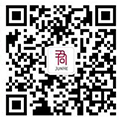《关于原料药领域的反垄断指南》要点解读
药品问题直接关系着人民群众的身体健康和生命安全,是国计民生的根本。用于生产各类药品的原料药对于药品领域的重要性不言而喻。因此,近年来,反垄断执法机关对原料药领域一直保持着密切的关注,先后查处了氯解磷定、冰醋酸、扑尔敏和葡萄糖酸钙等多个品种原料药垄断案件。
在整合原料药领域反垄断执法经验的基础上,2020年10月13日,国家市场监督管理总局发布了《关于原料药领域的反垄断指南(征求意见稿)》向社会公布征求意见。2021年11月15日,国务院反垄断委员会正式发布了《关于原料药领域的反垄断指南》(“《原料药指南》”),成为继《关于汽车业的反垄断指南》(“《汽车指南》”)、《关于平台经济领域的反垄断指南》(“《平台指南》”)之后的第三部行业性反垄断指南。
根据原料药领域经营者行为模式、经营特点、合作方式等,《原料药指南》有针对性地细化了垄断行为的分析思路和认定因素,为原料药领域经营者依法合规经营提供了更加清晰明确的指引。本文将结合近年来原料药领域的反垄断执法案例,参照其他行业性指南,对《原料药指南》中的要点进行梳理,以期对原料药企业的反垄断合规有所启发。
一、确立了原料药领域相关市场界定的分析原则
1. 原料药领域市场界定的基本分析框架
《原料药指南》遵循了《反垄断法》和《国务院反垄断委员会关于相关市场界定的指南》对于相关市场界定所确立的一般原则,即采用替代性分析的基本分析框架,从需求和替代两个角度进行考量以界定相关市场。根据《原料药指南》,由于原料药对于生产药品具有特殊作用,因此一种原料药一般构成单独的相关产品市场,并可能根据具体情况(如按照药品的质量等级、适用范围等)作进一步细分;同时,如果不同品种原料药之间具有替代关系,则可能根据具体情况认定多个品种原料药构成同一相关产品市场。
2. 原料药可进一步细分为原料药生产市场和经销市场
《原料药指南》规定,原料药的相关产品市场可根据具体情形,进一步细分为生产市场和经销市场。由于原料药在生产环节和销售环节所面对的客户群体可能存在差异,因此按照产业链流程来界定相关产品市场更具合理性。该市场界定思路在以往的立法和执法实践中均有体现。例如,《汽车指南》明确,根据个案具体情形,可能需要将汽车批发和零售分别界定为相关产品市场;此外,在2021年11月18日公布的南京宁卫医药有限公司滥用市场支配地位案(“氯解磷定案”)中,相关产品市场被界定为氯解磷定原料药销售市场。
将原料药的生产和经销界定为单独的相关市场,体现了反垄断执法机关对于重点执法领域中同一产业链上不同环节的关注,同时也提示经营者应分别评估其在产业链不同环节上的市场力量,以更加准确地分析和判断业务运营中的反垄断风险。
3. 原料药的相关地域市场一般为中国境内市场
由于原料药行业的特殊性,其地域市场的界定与汽车行业和互联网行业有所差异。《汽车指南》明确乘用车批发的地域市场为国别市场,但在零售层面,由于汽车牌照、汽车通行、售后服务、保修条款等种种限制,乘用车零售市场可以界定为省级或地区性市场;《平台指南》规定,根据平台特点,相关地域市场通常界定为中国市场或者特定区域市场,根据个案情况也可以界定为全球市场。
就原料药的地域市场界定而言,不同国家关于原料药生产、经销的相关资质和监管标准不同。在中国生产、经销原料药,原料药经营者应当按照核准的工艺组织生产,严格遵守药品生产质量管理规范和药品经营质量管理规范,确保生产和经营过程符合法定要求;进口原料药需获得中国相关监督管理部门批准。因此,生产、经销原料药的相关地域市场一般界定为中国市场。在现有公开的原料药执法案例中,反垄断执法机关均将相关地域市场界定为中国市场。
二、细化了横向垄断协议的具体行为
《反垄断法》第十三条禁止具有竞争关系的经营者达成横向垄断协议的行为。根据原料药领域的行业特点,《原料药指南》对原料药经营者构成横向垄断协议的行为进行了具象化罗列,同时还对协同行为的认定做了进一步说明。
1. 禁止通过联合生产、采购、销售和投标等协议形式达成横向垄断协议
《原料药指南》第六条规定,原料药生产企业与竞争者通过联合生产协议、联合采购协议、联合销售协议、联合投标协议等方式商定原料药生产数量、销售数量、销售价格、销售对象、销售区域等,一般构成《反垄断法》所禁止的横向垄断协议。
这一规定从表面上看与《汽车指南》中对于横向合作协议的态度存在一定的差异,后者规定,某些特定的横向合作协议如满足一定条件,反而能够增进经济效率,进而促进竞争,有利于增加消费者福利,属于可以根据《反垄断法》第十五条予以豁免的情形。我们认为,《原料药指南》中所列举的横向合作协议不必然构成横向垄断协议,《原料药指南》和《汽车指南》对于横向合作协议的态度也并不存在矛盾。从本质上进行分析,《原料药指南》所限制的是“表面为横向合作、实为横向垄断协议”的行为,即通过横向合作协议来实现原料药生产数量、销售数量、销售价格、销售对象和销售区域等的协同,对于原料药竞争对手之间真正的横向合作协议,仍然存在按照《反垄断法》第十五条进行个案豁免的可能性。
但需要说明的是,考虑到原料药对于民生问题的重要性,且《原料药指南》中并未提及横向合作协议可能促进竞争的效果,我们认为,对于达成横向合作协议的原料药经营者而言,其通过《反垄断法》第十五条获得豁免的难度相对更大。因此,原料药经营者在开展横向合作协议之前,应当充分评估其中的反垄断风险。
2. 沟通敏感信息存在较高的横向垄断协议风险
《原料药指南》规定,“原料药生产企业通过第三方(如原料药经销企业、下游药品生产企业)及展销会、行业会议等沟通协调原料药销售价格、产能产量、产销计划等敏感信息”,“原料药经销企业与具有竞争关系的其他原料药经营者就采购数量、采购对象、销售价格、销售数量、销售对象等进行沟通协调”,一般会构成横向垄断协议。
据此,原料药同业竞争者之间不得通过各种方式沟通协调敏感信息,既不得在经营者之间直接沟通,也不得通过第三方进行协调。特别是,对于通过第三方进行敏感信息交换的情形,尽管第三方可能并非行业内的竞争者,其仍有可能通过下文中所述的轴辐协议予以规制。
3. 禁止原料药经营者之间达成不生产或不销售原料药的横向垄断协议
《原料药指南》针对性地指出,原料药生产企业与具有竞争关系的其他原料药经营者达成不生产或者不销售原料药、其他原料药经营者给予补偿的协议,一般构成横向垄断协议。
从本质上讲,这一条款的规定实际上属于《反垄断法》第十三条所禁止的限制商品的生产数量/销售数量或者分割销售市场的行为。而该条款中对于承诺不生产或不销售原料药的经营者予以补偿的规定,实际上是通过补偿竞争对手的方式来排除原料药生产或销售市场上的竞争,这与医药行业所关注的“反向支付”1的垄断行为类似。
4. 明确对轴辐协议的规制
具有竞争关系的原料药经营者可能借助与其他经营者之间的纵向关系,或者由其他经营者组织、协调,达成具有横向垄断协议效果的轴辐协议2。《原料药指南》第九条明确了经营者不得组织原料药经营者达成垄断协议或者为其达成垄断协议提供实质性帮助,这一规定与《平台指南》中有关轴辐协议的规定相呼应,同时,该条款在近期发布的《反垄断法》修正案第十八条中也有所体现。
需要注意的是,原料药经营者的“主观故意”是判断是否帮助其他经营者达成垄断协议的主要考量因素。例如,如果某原料药经营者明知或者应知其他经营者与同一原料药经销企业签订相同、相似或者具有相互配合关系的协议,而仍然选择签署该协议,则存在达成横向垄断协议的风险;但是,如果该原料药经营者在签订相关协议时并不知悉其他经营者的协议签订情况,则可以主张其行为不构成横向垄断协议。但是,就如何认定“应知”或“明知”,《原料药指南》中并未给出明确的解释,这给予反垄断执法机关一定的自由裁量权。因此,原料药经营者在与原料药经销企业签订协议时,需要处理好与经销企业和其他原料药企业之间的关系,从而尽可能避免因“过失”而被认定为与其他经营者存在轴辐协议行为。
5. 通过间接证据可认定协同行为
《原料药指南》第八条规定,认定原料药领域协同行为,可以通过直接证据判定是否存在协同行为的实施。如果直接证据较难获取,可以根据《禁止垄断协议暂行规定》第六条规定,按照逻辑一致的间接证据,认定经营者对相关信息的知悉情况,判定经营者之间是否存在协同行为。
根据《禁止垄断协议暂行规定》第六条,认定协同行为一般需要考虑:(1)经营者的市场行为是否具有一致性;(2)经营者之间是否进行过意思联络或者信息交流;(3)经营者能否对行为的一致性作出合理解释;(4)相关市场的市场结构、竞争状况、市场变化等情况。
通常情况下,经营者之间的意思联络和信息交流具有很强的隐蔽性,执法机关很难获取。但是,经营者的市场行为、市场结构、竞争状况等则相对容易发现。根据《原料药指南》对于间接证据的规定,反垄断执法机关有可能根据市场行为存在一致性,结合其他间接证据而认定经营者之间存在协同行为。
需要注意的是,根据《原料药指南》第五条,经营者基于独立意思表示所作出的价格跟随等平行行为,不属于协同行为的范畴。据此,对于因市场行为一致性而引起的反垄断调查,原料药经营者存在从独立意思表示等角度予以解释的可能性。
三、强化了对客户限制和地域限制的纵向规制
就纵向垄断协议而言,转售价格维持一直是反垄断执法机关所关注的重点。《原料药指南》罗列了实践中原料药生产商限制转售价格的具体形式,这与其他行业不存在显著差异。
从客户限制和地域限制而言,根据《原料药指南》,地域限制是指原料药经营者限定交易相对人只在特定经销区域对下游一个或者若干个原料药经销企业供货,下游原料药经销企业不向其他经销区域销售;客户限制是指原料药经营者限定交易相对人只能将原料药销售给或者不得销售给特定的原料药经销企业、药品生产企业。
客户限制和地域限制在纵向垄断协议和附加不合理交易条件的规定中均有所体现,因此,这其中所涉及的反垄断风险可以在纵向和滥用两个框架下分别进行分析:
(1)从滥用市场支配地位的角度,根据《原料药指南》第十九条的规定,具有市场支配地位的原料药经营者,不得对原料药或者药品的销售地域、销售对象等施加不合理限制。据此,对于具有市场支配地位的原料药经营者而言,实施地域限制和客户限制本身存在附加不合理交易条件的滥用风险。
(2)从纵向限制的角度,如果原料药经营者本身并无市场支配地位,客户限制和地域限制本身仍有可能在纵向垄断协议的风险。《原料药指南》第七条规定,原料药经营者实施地域限制或者客户限制,可能构成《反垄断法》第十四条禁止的垄断协议行为。地域限制和客户限制可能导致市场分割、价格歧视,削弱原料药市场竞争,也可能导致其他原料药经销企业或者药品生产企业难以获得相关产品供应,使原料药和药品价格维持在高位。
通过上述条款可以发现,即便在纵向垄断协议的框架下,《原料药指南》也是着重于强调地域限制和客户限制的反竞争风险,而并非采取《汽车指南》中的立法思路,对不具有显著市场力量的经营者设置的具有经济效率和正当化事由的地域和客户限制进行豁免。这从一定程度上体现了反垄断执法机关对原料药行业的地域限制或客户限制等行为的严格监管态度。
尽管我国目前并无直接针对客户限制或地域限制进行处罚的执法案例,但部分处罚决定书中已经体现出反垄断执法机关对于客户限制和地域限制反竞争效果的关注。例如,在扬子江纵向垄断协议案中,执法机关认为“当事人通过限制销售区域、严禁不同销售区域窜货、违约惩罚等措施进一步加强了其协议条款的强制性和惩罚性,使得经销商只能遵守其产品价格要求。”
在《原料药指南》分析框架下,对于原料药经营者而言,在设定客户限制或地域限制之前,需要特别分析其必要性和反竞争效果,以尽可能地避免纵向垄断协议或滥用市场支配地位的风险。
四、细化了原料药领域市场支配地位的认定和常见的滥用行为
就原料药领域滥用市场支配地位的认定而言,《原料药指南》整体遵循了《反垄断法》第三章和《禁止滥用市场支配地位行为暂行规定》的分析思路,但在市场支配地位的认定和常见滥用行为等方面,《原料药指南》结合原料药的行业特点进行了细化。
1. 经销企业控制生产企业销售量的比例是评估市场份额的考量因素之一
除了经营者的市场份额、实际产能和产量、相关市场竞争状况等《反垄断法》所规定的用于判断市场份额的惯常考量因素之外,《原料药指南》还规定,计算原料药经销企业市场份额时,除销售额、销售量、库存量之外,还可以考虑该经销企业控制生产企业销售量的比例。我们认为,这一规定主要是基于原料药行业常见的独家经销模式。
从最新的反垄断执法来看,独家经销企业很有可能被认定为具有市场支配地位。例如,在氯解磷定案中,当事人与氯解磷定原料药生产企业签订独家经销协议,因而被认定在销售市场占有100%的市场份额,从而被推定为在氯解磷定原料药销售市场具有市场支配地位。
2. 进一步明确了共同市场支配地位的判断标准
《原料药指南》第二十二条明确规定,“两个以上的原料药经营者分工负责、相互配合实施本章规定的垄断行为,可能构成共同滥用市场支配地位行为。认定两个以上的原料药经营者具有市场支配地位,还应当考虑市场结构、相关市场透明度、相关商品同质化程度、经营者行为一致性等因素。”
根据主流学术观点和其他法域的实践,共同市场支配地位的认定并非单纯依据市场份额。共同市场支配地位主要存在于寡头市场,要求在没有明确共谋的情况下,各寡头独立行动,但其基于对于其他竞争者行为和策略的预测,存在并保持减少彼此之间竞争的默契。一般而言,在缺乏协同行为保证的情况下,这种默契是非常不稳定的,因此共同支配地位的形成存在严苛的市场和经济条件。
《反垄断法》和现有的反垄断执法实践均未对共同市场支配地位的认定提出明确的标准。《原料药指南》的这一规定实现了对现有法律原则化规定的突破,增强了反垄断执法的可预测性,对于企业合规运营而言,无疑具有重要的意义。
3. 梳理了原料药领域常见的滥用行为
《原料药指南》第十四条明确了原料药领域常见的滥用市场支配地位行为包括以不公平的高价销售原料药、拒绝与交易相对人交易、限定交易相对人只能与其交易、搭售商品或者在交易时附加不合理交易条件、对条件相同的交易相对人实行差别待遇等。
针对判断每种滥用行为所需考虑的因素,《原料药指南》均作出了明确的规定,增强法律制度的可操作性,为市场主体提供明确的合规指引。以不公平高价为例,分析是否构成不公平高价可以考虑销售价格是否明显高于其他竞争者的销售价格、该经营者在其他区域的销售价格和原料药销售价格的提高幅度等多重因素。例如,在氯解磷定案中,反垄断执法机关认为,当事人销售氯解磷定原料药的价格明显不公平,一是从加价情况看,当事人的销售价格是进价的5-10倍;二是从历史价格比较看,2018-2019年(当事人取得市场支配地位之后)的销售价格是2014年的26.09-52.17倍,据此,当事人被认定为实施了不公平高价的滥用行为。
由于原料药市场竞争者数量较少、市场集中度高、进入市场的壁垒高,相比于其他行业而言,原料药领域的垄断风险相对更大。《原料药指南》的出台,提高了执法的可预期性和透明度,同时,也有利于原料药经营者明确行为界限。从企业合规的角度,我们建议原料药经营者根据《原料药指南》尽快对企业的商业模式、经营活动进行全面梳理和自查,建设切实可行的反垄断合规体系,以尽可能地适应新的市场体系和监管环境,保证自身运营的合规性。
1.“反向支付”是指专利药企业向仿制药企业支付一定形式的经济利益,作为对价,仿制药企业向专利药企业承诺推迟其仿制药进入市场的时间。
2.“轴辐合谋”是指两个以上具有竞争关系的经营者(轴辐)通过与其它不具有直接竞争关系的经营者、中介机构、第三方平台等(轴心)沟通敏感信息,并在“轴心”的斡旋协调下达成竞争者协议共谋的现象。














